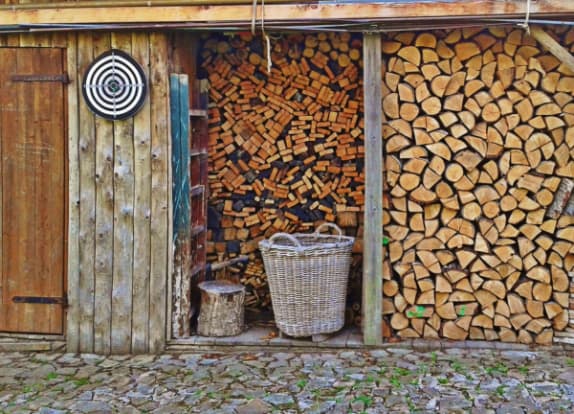

Sub-Heading 1: Introduction to DIY Firewood Maintenance and Storage
As the colder months approach, ensuring a steady supply of well-maintained firewood is essential for keeping your home warm and cozy. In this guide, we’ll explore the steps involved in maintaining and storing firewood yourself, offering tips for a successful and efficient process.
Sub-Heading 2: Selecting the Right Firewood
Not all types of wood are created equal when it comes to burning efficiently. Choose hardwoods like oak, hickory, or maple for longer-lasting and higher heat output. Softwoods, such as pine, ignite quickly but burn faster. Opt for well-seasoned wood with a moisture content of around 20% for optimal burning.
Sub-Heading 3: Proper Firewood Cutting Techniques
If you’re cutting your own firewood, using proper techniques is crucial. Use a sharp chainsaw or handsaw to ensure clean cuts. Aim for uniform lengths, typically 16 to 18 inches, as they fit well in most fireplaces and wood stoves. Cutting during the dormant season allows wood to dry faster.
Sub-Heading 4: Seasoning Firewood for Optimal Burning
Seasoning, or drying, firewood is a critical step in the process. Split the wood to expose more surface area and allow air to circulate. Stack the wood in a dry, well-ventilated area, preferably elevated off the ground. Properly seasoned wood burns more efficiently, producing less smoke and creosote buildup.
Sub-Heading 5: Checking and Maintaining Firewood Storage Area
Inspect your firewood storage area regularly. Ensure it is well-ventilated to promote drying and discourage mold or fungi growth. Keep the woodpile away from the house to prevent pests and allow for proper airflow. Use a tarp or cover on top to protect the wood from rain or snow while still allowing air circulation.
Sub-Heading 6: Building a Simple Firewood Rack
A dedicated firewood rack can enhance organization and drying. Build a simple rack using sturdy materials like pressure-treated lumber. Elevate the wood off the ground, and construct a slanted roof to shield it from the elements. This DIY rack not only aids in efficient drying but also keeps the wood easily accessible.
Sub-Heading 7: Avoiding Common Firewood Storage Mistakes
To maintain the quality of your firewood, avoid common storage mistakes. Don’t stack wood directly against a wall or building, as this hinders airflow and promotes moisture buildup. Also, refrain from stacking wood indoors, as the temperature difference between indoor and outdoor environments can impede drying.
Sub-Heading 8: Using a Firewood Moisture Meter
Invest in a firewood moisture meter to regularly check the moisture content of your stored wood. This handy tool helps you gauge when the wood is adequately seasoned and ready for burning. Keeping the moisture content low ensures cleaner, more efficient combustion.
Sub-Heading 9: Protecting Firewood from Pests
Pests like termites, ants, and beetles can be attracted to firewood. Elevating the woodpile, as mentioned earlier, helps deter ground-dwelling pests. Additionally, inspect the wood regularly for signs of infestation and address any issues promptly to prevent pests from entering your home.
Sub-Heading 10: Conclusion – Enjoying a Cozy Winter with DIY Firewood
Maintaining and storing firewood yourself is a rewarding and practical endeavor for the winter season. For more detailed guidance on how to effectively handle firewood, visit mimimises.org. By following these DIY tips, you’ll ensure a steady supply of well-seasoned firewood, providing warmth and comfort throughout the colder months.
